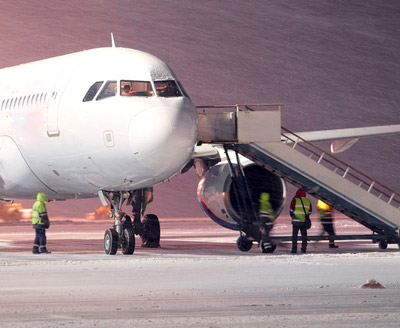FAA develops new standards to improve runway conditions
Posted: 20 July 2016 | Katie Sadler, Digital Content Producer, International Airport Review | No comments yet
The Federal Aviation Administration (FAA) has developed new standards to improve safety at U.S. airports and improve runway conditions during inclement weather.


The Federal Aviation Administration (FAA) has developed new standards to improve safety at U.S. airports and improve runway conditions during inclement weather.


As of 01 October 2016, U.S. airports, airline flight crews, dispatchers, general aviation pilots, and air traffic controllers will begin using new Takeoff and Landing Performance Assessment (TALPA) standards to reduce the risk of runway overrun accidents and incidents due to runway contamination caused by weather and other factors.
The FAA developed the standards based on the work of the Takeoff and Landing Performance Assessment (TALPA) Aviation Rulemaking Committee (ARC), which was formed after the December 2005 overrun accident at Chicago Midway Airport. In that accident, Southwest Flight 1248 ran off the end of the runway and into a city street after landing during a snowstorm.
Airports and air traffic controllers to communicate actual runway conditions to pilots
As a result of the committee’s work, the FAA has developed a new method for airports and air traffic controllers to communicate actual runway conditions to the pilots in terms that directly relate to the way a particular aircraft is expected to perform. TALPA improves the way the aviation community assesses runway conditions, based on contaminant type and depth, which provides an aircraft operator with the effective information to anticipate airplane braking performance.
Airport operators will use the Runway Condition Assessment Matrix (RCAM) to categorise runway conditions and pilots will use it to interpret reported runway conditions. The RCAM is presented in a standardised format, based on airplane performance data supplied by airplane manufacturers, for each of the stated contaminant types and depths. The RCAM replaces subjective judgments of runway conditions with objective assessments tied directly to contaminant type and depth categories.
The pilot or dispatcher would then consult the aircraft manufacturer data to determine what kind of stopping performance to expect from the specific airplane they are operating.
The airport operator will assess surfaces, report contaminants present, and determine the numerical Runway Condition Codes (RwyCC) based on the RCAM. The RwyCCs may vary for each third of the runway if different contaminants are present. However, the same RwyCC may be applied when a uniform coverage of contaminants exists. RwyCCs will replace Mu numbers, which will no longer be published in the FAA’s Notice to Airman (NOTAM) system.
Pilot braking action reports will continue to be used to assess braking performance. Beginning on 01 October, the terminology “Fair” will be replaced by “Medium.” It will no longer be acceptable for an airport to report a NIL braking action condition. NIL conditions on any surface require the closure of that surface. These surfaces will not be opened until the airport operator is satisfied that the NIL braking condition no longer exists.
Airports will start reporting runway conditions using the RCAM on 01 October. The FAA is advising operators to develop procedures for pilots and dispatchers that address the changes to runway condition reporting procedures.
Further information on the Takeoff and Landing Performance Assessment can be found here.
Join our free webinar: Beyond silos: How ecosystem thinking elevates the airport experience
In today’s complex aviation landscape, airports are moving beyond siloed operations to embrace a new era of collaboration. This webinar focuses on how leading airports are using ecosystem thinking to adapt, personalize, and continuously improve every touchpoint, boosting both passenger satisfaction and non-aeronautical revenue.
Date: 13 Nov | Time: 10:00 GMT
REGISTER NOW TO SECURE YOUR SPOT
Can’t attend live? No worries – register to receive the recording post-event.

















